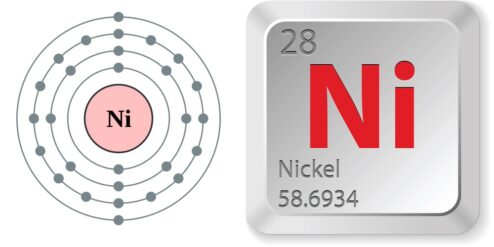Introduzione: Nickel is a naturally occurring element that is essential in small amounts for the human body. However, excessive exposure and accumulation can lead to nickel toxicity, a condition that can have serious health implications. Understanding the sources of nickel exposure, the health implications of excessive nickel in the body, and the diagnostic methods for detecting nickel toxicity is crucial. Additionally, knowing the effective strategies for nickel detoxification and how to maintain a nickel-free lifestyle can help in managing and preventing nickel toxicity.
Understanding Nickel Toxicity in the Human Body
Nickel toxicity, also known as systemic nickel allergy syndrome (SNAS), occurs when there is an excessive accumulation of nickel in the body. This can be due to prolonged exposure to nickel through various sources. Nickel, being a heavy metal, can interfere with the body’s metabolic processes, leading to a range of health issues. The body has natural mechanisms to eliminate small amounts of nickel, but when the exposure exceeds the body’s ability to detoxify and eliminate, it can lead to toxicity. Symptoms of nickel toxicity can vary from person to person and can range from mild to severe.
Sources of Nickel Exposure: Everyday Items to Watch Out For
Nickel is present in many everyday items, including jewelry, coins, eyeglass frames, zippers, cell phones, and certain types of stainless steel cookware. It is also found in certain foods such as nuts, grains, and chocolate. Occupational exposure is another source of nickel exposure, especially in industries such as mining, electroplating, welding, and battery manufacturing. Additionally, certain medical devices and dental materials can also contain nickel. Lastly, smoking and second-hand smoke are also significant sources of nickel exposure.
Health Implications of Excessive Nickel in the Body
Excessive nickel in the body can lead to a range of health issues. These include skin conditions such as dermatitis and eczema, respiratory problems like asthma and chronic bronchitis, and gastrointestinal issues such as nausea, vomiting, and diarrhea. Prolonged exposure can also lead to more serious conditions like kidney and lung damage, heart disorders, and even cancer. Nickel toxicity can also affect the immune system, leading to increased susceptibility to infections.
Diagnostic Methods for Detecting Nickel Toxicity
Detecting nickel toxicity can be challenging as the symptoms can mimic other conditions. However, certain diagnostic methods can help in identifying nickel toxicity. These include blood tests, urine tests, and hair tissue mineral analysis (HTMA). Blood and urine tests can help identify recent exposure to nickel, while HTMA can help identify long-term exposure. Patch testing can also be used to identify nickel allergy, a condition where the immune system reacts abnormally to nickel.
Effective Strategies for Nickel Detoxification
Once nickel toxicity is identified, it is important to take steps to remove the excess nickel from the body. This can be done through a process called chelation, which involves using certain substances that bind to heavy metals and help in their elimination from the body. Certain dietary changes can also help in nickel detoxification. These include increasing intake of foods rich in vitamin C and iron, which can reduce the absorption of nickel. Additionally, staying well-hydrated can help in flushing out toxins from the body.
Maintaining a Nickel-Free Lifestyle: Tips and Recommendations
Maintaining a nickel-free lifestyle can help in preventing nickel toxicity. This includes avoiding contact with items that contain nickel, choosing nickel-free jewelry and cookware, and avoiding foods high in nickel. For those working in industries with high nickel exposure, using protective clothing and equipment is crucial. Additionally, quitting smoking and avoiding second-hand smoke can also reduce nickel exposure. Regular testing for heavy metals can also help in early detection and management of nickel toxicity.
Conclusioni: Nickel toxicity is a serious condition that can lead to a range of health issues. Understanding the sources of nickel exposure and the health implications of excessive nickel in the body is crucial. Additionally, knowing the diagnostic methods for detecting nickel toxicity, the effective strategies for nickel detoxification, and how to maintain a nickel-free lifestyle can help in managing and preventing this condition.
Per approfondire:
- The National Institute for Occupational Safety and Health (NIOSH): Nickel – A comprehensive resource on nickel exposure in the workplace.
- The World Health Organization (WHO): Nickel in Drinking-water – An in-depth report on the health effects of nickel in drinking water.
- American Academy of Dermatology: Nickel Allergy – Information on nickel allergy, a common condition associated with nickel exposure.
- The National Center for Biotechnology Information (NCBI): Systemic Nickel Allergy Syndrome (SNAS) – A scientific article on SNAS, a condition caused by nickel toxicity.
- The Mayo Clinic: Heavy Metal Poisoning – Information on heavy metal poisoning, including nickel toxicity.


